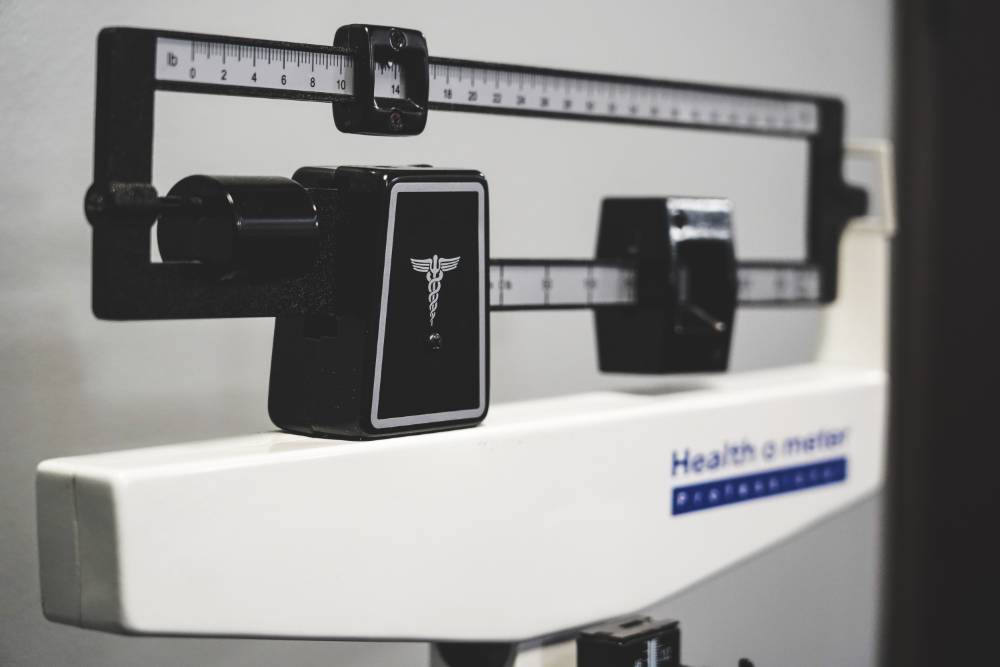If you fail to plan, you plan to fail.
Maybe you have heard of SMART goals- that is setting up a goal with Specific, Measurable, Achievable, Relevant, and Time Bound parameters. It’s been my experience that getting specific with this formula is necessary to achievement.
In this post I am going to introduce you to a systematic step by step approach to ensure that you are aware and ready to tackle every aspect of your goal once you commit to it. Using a time frame of a handful of days to dive into and explore the details will give you enough time to let it all soak in and prepare you for the work ahead!
The top goals I hear from clients are:
- I want to get stronger
- I want to be toned/ muscular
- I want to lose weight
- I want to be healthy
Its pretty common for people to want ALL the above as a goal. That’s a lofty order.
Everyone says these but not everyone has followed through and maintained a year later.
This is usually because the goal wasn’t planned and thought out in enough detail.
“I want to be stronger” What does that mean to you as an individual? Stronger than what? Do you know how strong you are now? Have you measured your strength against a reasonable standard? My point is a defined starting point and attainable metrics are needed. Begin by assessing and having a standard to measure against so you know your true starting point.
The same can be said for the other top goals. Its first important to recognize that people over 40 who don’t resistance train with sufficient stimulus are under muscled. So, focusing on gaining muscle mass is far more advantageous than focusing on weight loss in the long term. It’s not just exercise that is needed, or “moving more”. It’s doing specific rep ranges with specific load on a foundation of strength. Getting specific with this will address many of the above common goals.
When a person lifts weights, the natural consequence is overall fatigue. Modifications in nutrition and sleep practices are more apt to occur so that a person has the energy to be able to perform those demanding sessions of exercise. When this happens, they accomplish both weight loss and muscle gain, as well as make improvements in their health profile. We rise to the occasion!
So, asking on Day 1- Is my waist circumference in a normal range? Am I in the range of my body mass index? What’s my current energy intake? Is it greater than my energy output? What’s my current state of conditioning? What is my strength assessment regarding my age group? What does my bloodwork show, and how’s my heart health?
All of these are going to factor into the next important step to goal setting which is setting a time frame.
Day 2- Setting a realistic time frame. With all the information that you collect on day 1, you are now armed with a realistic picture of your starting point. Having a road map to anywhere needs both a starting and an end point.
So, what are realistic time frames? Its realistic to expect to spend a minimum of 12 weeks to see gains in foundational strength. Depending on starting points like age, injury history, learning, body awareness, overall fitness, lifestyle practices, and consistency, that could mean for others 6 months and it’s reasonable to expect a year long consistent commitment to get to the heavier loading. Muscle growth is dependent on a base of strength. Remember that adding muscle mass to the body is a component to all the other goals of better health and weight management.
For weight loss, a reasonable time frame is a pound a week, but in a person who has nutritional deficiencies, it could take up to 12 weeks to begin to see the scale move to lower numbers with consistency.
It’s also important to consider that as the scale drops, the caloric intake must also drop to accommodate more weight loss. Therefore, adding muscle mass is so valuable. A low muscled person can be stuck at 1200 calories a day and not be able to lose any more weight because their lifestyle and physical needs just don’t require that much energy. It’s less aggravating and less punishing to manipulate with both resistance exercise and calories, using weights to change body composition.
This is why dieting alone is not a very effective way of managing weight over a larger time frame. Neither is doing purely cardio exercise because its utilizing calories, but the body adapts quickly and no longer requires the same amount of calories to do the job. It’s not progressive
So, set realistic time frames based on the data you collect on day 1. Have periodic “assessment” dates where you can measure how far you have come and use that information to make changes moving forward. In your time frame, track, track, track. Record meals, schedule, and record specifics of workouts. You need hard data to decide what’s working and what’s not.
Don’t make the timeframe too short- three weeks is too short for any of the goals listed above.
Get clear on what you are willing to do for the long term, as well as what you are Not willing to do. A common error is trying to change too much or being unrealistic about what’s doable daily and week after week. What is commonly portrayed on social media as a standard has taken years and decades of work to accomplish. So have the best version of Yourself in mind when setting a goal.
Day 3- Cultivating a Mindset. Anyone who has ever set a goal and quit before fruition knows that mindset is everything. Know your Why. It must be deeper than I want to lose weight, I want to get stronger. It must be deeper than wanting these because family members or friends have experienced negative outcomes from lacking what you want to achieve. As humans we default to thinking it always happens to other people, or we are good at distracting ourselves with the very behaviours that contribute the negative outcomes that we are trying to avoid.
So, the why must have a value attached to it, and the value must be action based. For example, let’s say my goal is to gain muscle. I value muscle because I value maintaining deep health as I age, and I know that having muscle mass and deep health (health span) go together. I say I am a disciplined person, and it takes discipline to make muscle. Discipline and consistency are akin, and it takes these to develop muscle. I value consistency and dependability as personality traits. Both need to be applied in the process to attaining this goal, so when I demonstrate this, I am consistent and dependable in following through with what I say I am going to do. See how the goal got a lot deeper into what I value and even into demonstrating who I am? This builds accountability. Accountability to self because it is an internal connection to self and goal that is created. Only goals that have deep meaning will be sustained.
Day 4- Prioritizing. Goals are hard work to achieve. They require setting time aside consistently. Life can be so busy that without planning out this step, goals will fall by the wayside. Ways to assist with prioritizing have to do with organization.
- keeping a schedule of workouts and not allowing other things to interfere
- developing a set of habits that, when practiced daily, lead to the goal
Are some people just naturally more organized than others? Everyone knows that person who is never on time for anything. That is a learned habit, engrained with practice. It is habitual but it IS grounded in choice. Mindful noticing of behaviors that run contrary to what we want to achieve and to who we say we are, are the first step to change. Everything we do is rooted in habit. There’s a reason behind every behaviour. The funny thing about time is that the same amount of hours in a day can be viewed in abundance or lack. The person who has developed a practice of prioritizing will never run out of hours in a day.
To build a practice of prioritizing, use the “2 crazy questions”:
- What am I getting out of choosing ***this behaviour***, as in, what is good about not changing the things I currently prioritize?
- What do I feel would be bad about changing ***this behaviour** as in, what would I lose by changing how I currently prioritize?
Lastly, even in prioritizing there must be flexibility. Going hard all the time and abstaining all the time will lead to burnout. The deeper purpose to goal achievement is self-discovery. Learning how to listen to and negotiate with oneself and strengthening the relationship that we have with ourselves.
Day 5-Pulling all the Information together to ACHIEVE MORE
When planning out a fitness/ health goal, focus on overall health.
Unless you are an intermediate to advanced lifter, a bikini competitor, or higher-level athlete, you probably don’t need special protocols. Most of us do well just focusing on getting into basic healthy habits. As you can see, there’s a lot of crossover in goals, so focusing on health span covers them all.
- aim for zero poor metabolic markers for life. A waist circumference that is below 88cm for women and below 102cm for men.
- stay within your BMI and lift weights to add muscle mass
- build and maintain performance. From basic standards like getting up and down off the floor hands free to being able to coordinate movements like jumping back and forth on one leg a multitude of times. Sustaining a hard cardio effort for three minutes.
For any goal nutrition, exercise, and recovery go together, as each one effects the other. Weight loss can be a stand-alone goal, but an unhealthy body will have a hard time letting go of fat stores without continually dropping calories. Focusing on improving body composition and performance is far less restrictive, more sustainable, and more rewarding long term.
So, smart planning is limiting processed foods, high energy foods, and low nutritional foods. Getting enough lean protein, fruits, and vegetables. Quality starch carbs and fats in relation to activity levels. Adding in resistance training and harder cardio work. Train to gain and maintain muscle. A muscled person is a strong person who can hang off a bar for time, can lift heavy weights off of the floor, can press their body up off of the floor multiple times and is also going to be metabolic at rest. This person will also naturally be more metabolic, therefore maintaining weight is easier.
Now, the most important step of all is to take action! It’s fun to plan but only consistent action will move dreams into reality.
You are now ready to:
Assess– know your starting point and the habits and skills you need to build to achieve
Set a realistic timeframe-Your starting point and roughly how long it will take to achieve and maintain your goal. Have reassessment points along the way. Work from relevant and researched information. Have an end date and plan how you are going to maintain goal.
Mindset– cultivate a long-term attachment to goal. The internal surfaces on the external.
Prioritize– no time or an abundance of time, there is always time to do what we view as important. Start out knowing what deeply matters to you to stay engaged.
Have a solid plan to follow before you start. Schedules, lists, steps, habits. when every detail is laid out all you do is wake up daily and follow the system. Hire a coach who knows the ins and outs of creating this.
Have a plan that has an overarching theme of deep health/healthspan based on researched standards. Good health, good body composition and good performance are all connected.
All that’s left to do now is to get after it!!




